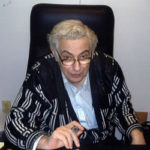Hertz Stress as a Connector Design Parameter
Dr. Bob on Hertz Stress as a Connector Design Parameter
I was looking for some information in my files a few weeks ago, when I came across a folder entitled “Hertz Stress.” My mind leapt back 20 years as I recalled discussions that the concept had raised at that time. Using Hertz stress as a connector design parameter was another attempt to find a “Golden Rule” for connector design, and it got quite a bit of attention, including in some standards organizations.
There are some common questions about connector design parameters that have lingered over the years, including requirements for minimum contact normal force, plating thickness, and porosity, among others. But Hertz stress was a more encompassing and quantitative effort. I would like to revisit the Hertz stress controversy because it provides insights into some of the complex interactions among a number of connector design parameters.
A little background on Hertz stress is necessary. The equations for Hertz stress calculations were formulated by Heinrich Hertz back in 1882, and, while the formulae were general, they were intended for optical applications, in particular the deformation of lenses in contact. Because of this fundamentally different application, many of the assumptions used to derive the various Hertz stress formulae are not appropriate for connectors, an issue the mathematically inclined may find interesting. But, apart from that limitation, Hertz stress equations include three of the most important connector design parameters. For example, a Hertz Stress equation for a sphere-to-flat geometry, representative of many connector interface geometries, is:
sH = [ FN (E/D) ]1/3 Equation 1
Where sH is the calculated Hertz stress (Hertz stress cannot be measured), FN is the contact normal force, E is the elastic modulus of the materials in contact, and D is the diameter of the contact area created by the applied normal force. Connector contact springs are generally made from copper alloys, which fall in a limited range of elastic moduli. So, for the purposes of this discussion, the analysis reduces to the relationship between contact force and contact interface geometry.
We will return to Equation 1 again, but the paper that stimulated the discussion (Critical Specifications for Dry Circuit Connector Applications by L.D. Hobgood and E.A. Kantner of IBM Raleigh) does more than present the Hertz stress equation. It cites a survey of connector applications that correlates Hertz stress with the field performance of connectors in a variety of electronic applications. I am a strong proponent of taking field experience as the best possible guideline to connector design/material validation. If a connector design works in application “A,” try it in applications similar to A to extend the application universe for a given connector design. From their survey, the authors ultimately made a recommendation of a minimum Hertz stress of 150,000 psi for twin-beam contact systems to ensure acceptable performance in the field. (This stress cannot be realized in connectors, another reason why only the calculated values are considered. The actual stresses at the contact interface cannot exceed the yield stress of the material.)
Now the various parameters in Equation 1 are obviously important factors in achieving the ultimate goal of connector design, which is “to create and maintain the integrity of a metal-to-metal contact interface” under the application conditions of the connector. A stable metal-to-metal contact interface, in turn, will provide a stable contact interface electrical resistance, which is the ultimate performance requirement for a connector.
Equation 1 does address the creation of the contact interface, that is, to determine the contact area. The relationship between the contact force and the contact area is straightforward if the hardness of the materials in contact is considered. The units of hardness are Newtons/meter2, so simply, a Newton of force will create a contact area of X square meters, a direct relationship. So the contact force determines the size of contact area that will be created at the contact interface. But the shape of the contact area depends on the geometries of the surfaces coming in contact. The Hertz stress equation cited is for a sphere-to-flat geometry, therefore the contact area in this case will be circular.
Consider now the relationship between contact interface resistance and the geometry of the contact interface. For a circular contact area, the contact interface resistance, Rcontact, will be given by:
Rcontact = r / D Equation 2
Where r is the resistivity of the contact material and D is the diameter of the contact spot. While the size of the contact area is the dominant factor, the contact area shape will have an impact on the contact resistance as well.
Returning to Equation 1, it is apparent that a given value of Hertz stress can be realized by varying the contact force and/or the contact geometry independently. High forces and large curvatures, and low forces and small curvatures, can produce the same Hertz stress. This is the major limitation of Hertz stress as a connector design parameter, as will be discussed in my next article (come back October 4).
The purpose of the discussion up to now is to confirm the obvious — Hertz stress does not uniquely determine the size and shape of the contact interface, so it does not uniquely determine the electrical resistance.
Equation 1 provides no insight into “maintaining the integrity” of the contact interface. It is important to note that the integrity of the interface is arguably a more important performance requirement. The electrical requirements of the connector can be designed around a range of connector resistances, but resistance instabilities are more difficult to account for and accommodate. The contact normal force is the most important design parameter in providing interface stability. The friction forces created at the interface by the contact force provide the mechanical stability of the interface. Mechanical stability is important because it is the small-scale motions of the contact interface — fretting motions — that drive the degradation of contact interfaces, and therefore, contact resistance.
Contact force also has a significant impact on two connector performance requirements that are not addressed by considerations of Hertz stress; connector durability (wear) and connector mating force. Wear rates and mating forces both increase with increasing contact force. Increases in contact force can also result in discontinuous increases in friction forces that, in turn, can discontinuously increase wear rates and mating forces. It must be noted that the contact mating geometry also influences connector wear and mating forces. More about that topic in my next article.
In summary, Hertz stress does not definitively define the contact interface size/shape, and therefore, contact interface resistance.
Because of this ambiguity, Hertz stress offers no insight into connector wear behavior or mating forces, two very important connector performance parameters.
I’ll provide support for these positions in the next article. Stay tuned.
- Nanocrystalline Silver Alloy Contact Finishes in Electronic Applications - April 6, 2015
- Nanocrystalline Silver Contact Platings - March 16, 2015
- Dr. Bob on Gold Flash Contact Finishes (and Max Peel) - September 22, 2014






